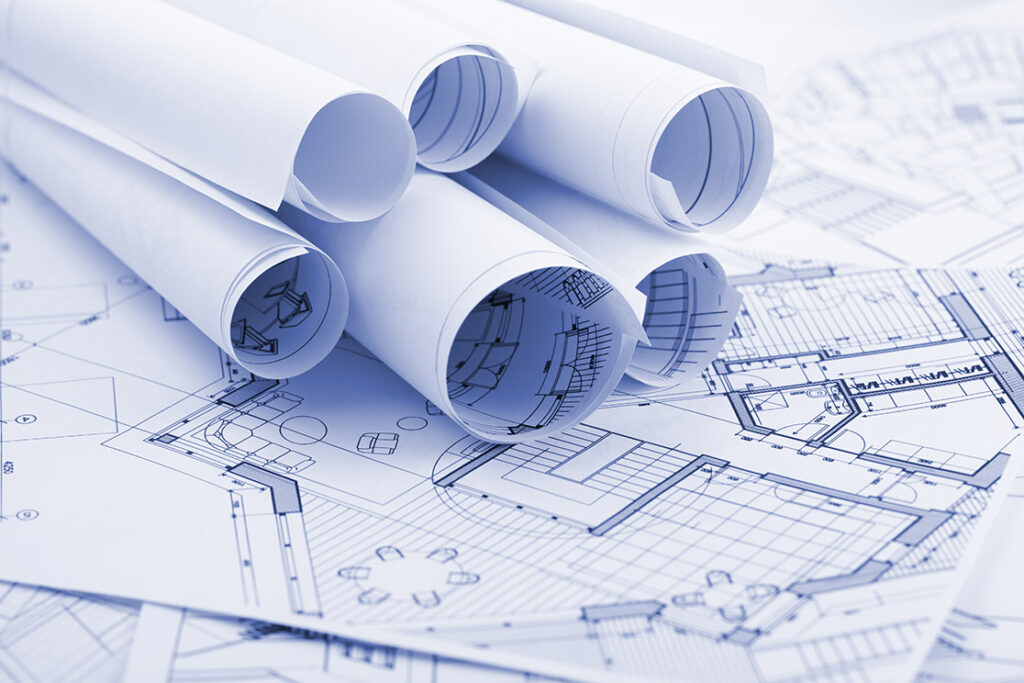The 5 Keys to Collaborative Relationships Between Architects and Construction Companies

Design and construction is a multi-step business.
It begins with a development owner with a project in mind. They’ll need someone to design it. Whether it’s housing, offices, a retail space, or a city skyscraper – so an architect comes on board.
No building goes up without planning permission. And for large projects this can be a protracted and challenging process.
Permission granted? Then the construction company needs to be decided on and briefed. Once the go-ahead is given, work can begin.
Each phase involves many steps, and every one of them comes with its own list of sub-tasks.
The work takes place…
And once the building is complete, the users come on board. These could be new home residents, office workers, leisure facility users or shoppers. Maybe they are manufacturers, or service providers. Whoever they are, their investment can be long-term, so they’d better be satisfied.
A constant burning question for all concerned with the build is “how do we get this done fast, safely, on budget?”
It can start with this – strong, trusted relationships between the partners on the project. True collaboration and a great relationship. Working together closely allows construction companies and architects to bring visions to life optimally.
Architects create building designs, sometimes innovative, even outstanding. Then they rely on us to execute their plans with precision and expertise. Clear communication, and greater trust, make it easier to bring the best out of the blueprints.
So how can these two entities work in tandem? Why should they face the challenges they may encounter together? And what opportunities can they create for developing remarkable projects?
Sustainability in construction is a critical factor too. So how does this impact the dynamic between architects and constructors? How can collaboration bring top-notch results?

Key 1: Take Your Partners: Architects and Construction Teams
The Crucial Role of Architects – the Visionaries
All buildings these days are ‘designed’. Humble home or grand skyscraper, someone decides how they look, function, and behave. OK, the most straightforward designs might not involve an architect. But when it comes to commercial projects, they are essential. The initial concept and plans set the foundation for the entire project.
Architects balance aesthetic appeal with functionality. A good-looking building is great, but we must ensure it meets the needs of the intended users. All this while also complying with regulations, laws, and building codes. The architect’s detailed blueprints serve as the guide for construction companies to follow.
How Construction Companies Bring Architectural Designs to Life
The architects have laid out their visions in plans and specification sheets. Now it’s the role of construction companies to turn these designs into tangible, strong, functional structures.
What does a great construction company bring to the party?
- Let’s start with their expertise in the practical aspects of large-scale construction. They understand the properties of different materials, techniques and skills. And they know where to find the right trades to make the build possible.
- They have a firm grip on logistics. The experience to know how to problem-solve on the fly is what you need to overcome any issues that crop up. A smooth and trouble-free construction project… well, hens’ teeth come to mind. However, facing down any challenges is how a great construction firm excels.
- They totally understand the practicalities of turning designs into physical buildings. All whilst dealing with unforeseen site conditions, material limitations, and spec alterations. They will need a skilled workforce of engineers, project managers, and tradespeople, all prepared to work diligently.
- It’s critical to maintain the integrity of the design – it’s what the developer is expecting. All work has to be done whilst ensuring the safety of those working on it, and those who will use it.
What is the driving goal? That the final structure meets, and exceeds the expectations of all concerned. That’s what we at BHR strive for every project. It’s a target we never miss.
Key 2: Collaborative Synergy: Working Together for Success
Strong collaboration between architects and construction teams is essential to the success of the project. There’s no argument there. Both bring unique skills and perspectives to the table. With great communication they can create innovative solutions and superior results through proactive synergy.
The most important factor? Trust.
When collaboration includes trust and respect, it makes conversations easier. Especially difficult conversations.
Is the architect/construction relationship always easy? It would be dishonest to try and make out that it is. Truth is, we often have different aims, or at least the priorities of one might clash with those of the other.
That’s when good communication and understanding becomes the linchpin of this relationship. The construction company must ensure the architects’ designs are understood and implemented correctly. The architect must respect and acknowledge the practicalities the builders face.
So an open, honest relationship also helps with timely identification and resolution of issues. We’ve seen it demonstrated time and again that this can save time and resources. It’s a huge benefit to work closely from the outset of a project. That way we’re far more likely to stay on schedule and within budget.
Challenges in the Architect-Construction Relationship
While the relationship between architects and builders is critical, it’s not, as we said above, without challenges.
Communication breakdowns can lead to misinterpretations of designs. This has the potential to cause costly errors and delays. Differing priorities can also pose issues. Architects may focus on the aesthetic and functional aspects of a design. Builders have to prioritise solid practicalities and budget constraints.
These differences can lead to tension and disagreements if not managed effectively. It’s where trust and respect step up. You both know you’re good at your jobs, and you have the same goals, so discussions leading to agreement are far more likely.
Timelines can become a source of conflict. This is especially true when design complexities lead to longer-than-expected construction times. Then we need open, ongoing dialogue and flexibility, so answers are found and agreed.
What do BHR believe in?
We know our job is to establish clear expectations and understanding on day one. Then we work continually to maintain a shared commitment to success. That way we can navigate obstacles and forge a strong, productive partnership.

Key 3: The Green Revolution: Sustainability in Construction
How Sustainability Affects Architect-Builder Relationships
Sustainability has become a cornerstone of modern construction. Younger generations have grown up faced with the demonstrable importance of environmentally friendly practices. It’s not acceptable to them to ignore the short and long term impact a project is going to have on the environment.
Architects increasingly prioritise and create eco-friendly designs. Construction companies must rise to the challenge to meet these green standards. This can mean the use of new materials and construction techniques – a learning curve for trades.
What does keeping ahead of the curve mean for us?
Everyone needs to know about the latest advances in green technology and building codes. When partners share a common goal it fosters a closer relationship. Architects and construction teams must collaborate more intensively. We need to speak frequently from the project’s conception to completion. By working together we can weave environmental considerations into every stage.
The drive towards sustainable building practices is not only an ethical choice. It’s a business imperative that can set a company apart in a competitive market.
Embracing Eco-Friendly Practices: Opportunities and Challenges
Adopting eco-friendly practices presents both opportunities and challenges for architects and construction teams.
On one hand, it opens up the chance to innovate and use new sustainable materials and energy-efficient designs. These can lead to long-term cost savings and environmental benefits. They can also provide a competitive edge in the marketplace and appeal to clients who value sustainability.
On the other hand, moving towards green construction can involve higher initial costs. The need to invest in training staff to work with new technologies and materials is a consideration. There may also be challenges related to sourcing eco-friendly materials. We will need to ensure they perform to the same standards as traditional options.
Yes, there are hurdles. But there is no denying the long-term benefits of embracing sustainability in construction. We can help drive the industry towards a more responsible and forward-thinking approach.
Key 4: The Profitable Triangle: Benefits for Development Owners
The Mutual Benefits of Architect-Construction Collaboration
The collaboration between architects and builders undeniably delivers benefits for both. But what of the developers?
Fantastic cooperation, communication and trust translates into significant advantages for development owners too.
- A seamless partnership between design and execution can lead to faster, better quality results.
- Collaboration leads to fewer misunderstandings and mistakes. That means delays and redesigns are avoided, which is great for progress. Saving time and reducing costs without compromising quality and safety delights the client.
It can also foster innovation.
- Developers who can rely on budgets being kept to may feel more inclined to push the architectural boat out a bit further.
The benefits for development ownerscome down to this. A smoother project lifecycle, which means all kinds of goodness. There’s a higher likelihood of the project being delivered on time, on budget, and to spec.
Key 5: The Future of Construction: Embracing Collaboration
The construction industry is evolving. We live with a never-ending state of development and innovation in our craft. Collaboration is now a key driver of success.
As time passes, project demands become more complex, and client expectations rise. We need cohesive teamwork – it’s undeniable and urgent.
Can we use technology to help the process? Yes – software and strategies such as building information modeling (BIM) come into their own here. It leads to a more synchronised approach to design and construction.
When we work together, we can share knowledge, improve efficiency, and drive innovation. This ensures that the industry is well-prepared for current and future challenges.
Our shared commitment to collaboration is key to the future. It will set the foundation for a more dynamic, resilient, and successful construction industry.

Taking the Next Step: How to Foster Effective Collaboration
How can architects and construction companies foster truly effective collaboration? They need to meet, talk and take deliberate steps to align their goals and processes.
It starts with open communication. We need a transparent exchange of ideas and expectations from the start of a project. Regular meetings and the use of collaborative software can keep everyone on the same page.
Sounds simple enough, doesn’t it?
We come back to something we mentioned several times earlier on – trust.
Both parties must commit to a culture of mutual respect. When we recognise the value each brings to the project it bridges gaps. When we understand each other’s priorities, languages and skills, we streamline the work.
Joint problem-solving sessions can help in anticipating challenges and developing solutions.
Finally, a formal collaboration agreement can outline roles, responsibilities, and processes. When all parties are committed to working together effectively for the success of the project, it’s very much a win-win-win scenario.
At BHR Commercial Construction we’ve worked closely with excellent architects and designers. We’ve earned that trust, and built respect for what we can achieve.
Are you an architect looking for a great relationship with a reliable construction team? Or a developer who likes the idea of a collaboration that delivers excellent results?
Call us – we’d love to get to know you.
Back to Insights